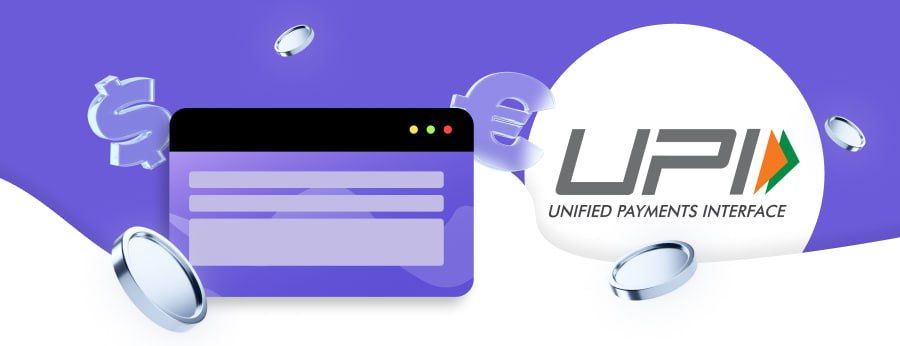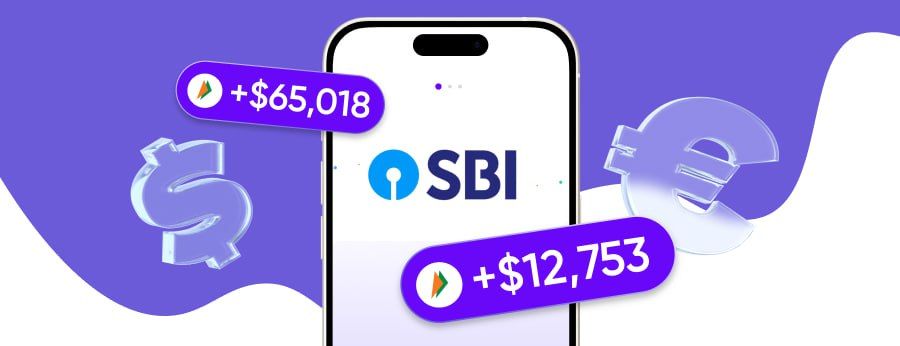The Unified Payments Interface (UPI) has transformed India’s digital payment ecosystem. With mobile devices, sending money in real time has become easier, safer, and more convenient.
UPI simplifies personal and business transfers without requiring account details or IFSC codes. The State Bank of India is one of the largest UPI transaction participants in the country. It enables millions of customers to send and receive funds easily. Knowing the caps can help users transfer bigger payments and to make the digital banking service easier. Learn the SBI UPI transaction limit to manage transfers efficiently and avoid disruptions in daily use.
What Is UPI Limit for SBI?
What is UPI limitat for SBI? Anyone who uses mobile banking or digital wallets should know this. State Bank of India follows guidelines set by the National Payments Corporation of India (NPCI), which balance convenience and security. Refer to the detailed UPI transaction limit resource by Paykassma for a full overview of these guidelines.
The Unified Payments Interface enables real-time fund transfers between bank accounts with the help of a mobile device. However, to protect users and ensure smooth transactions, banks apply restrictions on how much and how often money can be sent.
Although customers can increase the SBI UPI limit, the standard limitations are as follows:
- Maximum per transaction: ₹1,00,000.
- Total daily transfer cap: ₹1,00,000.
- Maximum number of transactions per day: 10.
Supported platforms: YONO, PhonePe, Paykassma and others linked to an account.
These limitations apply across all major apps and to most personal account holders. State Bank of India may, however, apply internal adjustments depending on the account type, payment behavior, or security protocols.
The payment structure prevents fraudulent or unauthorized activity. Also, it helps users manage daily finances with predictability. These limitations ensure that digital payments remain safe, efficient, and user-friendly. The max amount is usually sufficient for the majority of frequent payments, such as groceries, utility bills, or rent expenses, but middle and big businesses need a higher transaction cap.
Understanding what the transaction limit is helps users avoid unexpected issues during payments. If a user transfers small amounts more than 10 times a day or reaches the SBI UPI transaction limit one time of ₹1,00,000, it’s important to know how to ease the restrictions.
If you find these caps restrictive, the State Bank of India offers ways to increase the transfer ceiling through its official mobile app or in person. Discover both methods in the next section.
The Limits in Details
The cap helps users manage their digital payments securely. The systems work easily, and limitations prevent misuse and ensure that the platform remains reliable. If you use the platform for frequent transfers, it is important to know them and how to manage them.

SBI UPI Transaction Limit at One-Time
The limitation is the maximum amount that a client can send in a single transaction. Currently, the State Bank of India allows up to ₹1,00,000 per transfer. It is applied when a customer uses the YONO app, PhonePe, Paykassma or any other third-party service linked to the account.
The limitation per transfer provides convenience and protection. The threshold meets the needs of one-time payments like home rent, tuition, or travel bookings. However, if you plan to make larger transfers, you may have to split them into multiple payments or explore alternative methods. For example, NEFT or RTGS services can handle higher-value transfers with similar speed and security. Knowing your options ensures that urgent or high-value transactions aren't delayed due to the restrictions.
SBI UPI Transaction Limit per Day
The daily cap defines the total amount you can transfer in a single calendar day. The daily cap is ₹1,00,000 in total, with a cap of 10 transactions per day. This approach protects users and eliminates potential fraudulent activity.
This transaction restriction per day applies even if you use different apps or send money to multiple recipients. For example, platforms like Google Pay also follow similar rules – see the GPay limit per day to understand how it aligns. It is important for managing personal budgets and for small businesses relying on the company for routine payments. Exceeding this limitation may result in transaction failures, which can be problematic at urgent transfers.
SBI UPI Transaction Limit per Month and Year
Currently, there is no fixed transaction cap per month. The bank adheres to a per-day cap, which means users are free to carry out transfers each day, up to the allowed maximum, without any worries about a cumulative monthly restriction.
The flexible method is great for its customers who pay bills, transfer funds to family, or even manage household expenses. However, it is always good to cross-check your history to remain within safe caps.
This approach also allows users to maintain consistent cash flow throughout the month, making it easier to budget and plan recurring payments. The process is simple and when following the right steps, you can make the most of the digital services and keep the finances secure.
Does SBI Charge for UPI Transaction?
A common question among users is: does SBI charge for UPI transaction? The answer is no. State Bank of India does not apply any extra charges within the permitted transfer caps. Whether you're sending money through the YONO app, Paykassma or any other platform, there are no fees. Unlike some banking services that may incur credit card or NEFT charges, the service is free for bank customers. This makes the service a top choice for fast Internet financial billings. However, users must make sure they stay within the daily and per-transaction thresholds to avoid failures or delays.
How to Increase UPI Limit in SBI?
If you often reach a daily threshold or plan larger transactions, learn how to increase the restriction. The bank offers two easy methods to manage and expand the cap. This flexibility ensures the payments are smooth and uninterrupted, especially, when you handle time-sensitive transfers such as rent, utility bills, or even tax payments. Taking control of your caps lets you manage larger financial operations confidently and avoid disruptions during critical billings.

Yono Transaction Cap per Day
One of the easiest ways to increase UPI limit SBI is through its mobile banking platform, YONO. Users can make adjustments directly from their smartphones by completing the following steps:
- Log in. Open the SBI YONO app and log in using your credentials (username and password).
- Find the right button. Navigate to the "UPI Transfer" section from the home screen.
- Set the cap. Click on "Set Transaction Limit".
- Enter the new desired cap. It is up to ₹1,00,000. Next, prove your identity with OTP or biometric authentication.
- Confirm. Submit the request and wait for its confirmation.
These changes process instantly and become applicable for same-day transactions.
Visiting an SBI Branch
If you're not comfortable using Internet banking or cannot access the app, you can increase the limit in a nearby branch. This method is good for senior users or for people who are experiencing any technical issues.
To proceed:
- Go to the branch. Visit the branch with your account number and a valid ID.
- Request. Go to the customer service desk and state your request.
- Provide details. Fill out the necessary forms and provide any required documents.
- Verify. The bank staff will assist in raising your transfer cap after verification.
You can adjust for the SBI UPI transaction limit per month (for recurring transfers) or daily transfers. That will help you control your digital banking.
Common Issues and Troubleshooting
Sometimes users can face issues even though they have not reached their assigned restrictions. These errors may occur from system delays, app-specific restrictions, or misconfigured settings. Learn how to identify and fix such problems to have uninterrupted access to the services.
One common issue is related to the YONO transaction limit per day, which might be lower than the standard cap set by SBI. For instance, even though the general cap is ₹1,00,000, the daily cap set in your YONO app could be lower due to custom settings or past account activity. In such cases, review your settings. To fix these errors, try doing these steps:
- Check your cap. Check if your YONO daily cap is lower than the bank maximum.
- Adjust it. Learn how to set UPI limit in SBI using the app settings to manually adjust the value.
- Go to the branch. If you're unsure about app configurations, visit the bank's official blog or help centre for instructions.
- Update the app. Clean the cache of the bank app and update the app to the latest version.
- Check for errors. Review your recent transactions. Some delays may result in incorrect error messages.
- Call Customer support. Customers can go to the SBI branch or contact customer service through the helpline.
If you’ve recently adjusted your limitation and still face issues, discover how to change UPI limit in SBI again via YONO or branch support to reset the error. Make sure that you saved and verified any changes successfully.
Some problems may also occur due to online platforms or third-party apps. In such cases, contact the official app and fix the problem. Clients may have to undergo additional verification for specific account types, especially for those with large amounts of savings.
Security Measures and Best Practices
To ensure the safety of digital transactions, customers should use security tips when working with the services. Discover these key steps to prevent fraud:
- Always safeguard your PIN code. Never share the code with anyone, even bank representatives.
- Do not use free public Wi-Fi networks during transfers.
- Make sure the device has a screen lock, password, Face ID, or app protection.
- Review your transaction history at the end of each month as it helps identify any anomalies early. If you use any expense tracker, compare the payment history in both apps.
- Always download the app from official sources and keep it updated to avoid vulnerabilities.
- Enable biometric or two-factor authentication for better protection.
- Use strong, unique passwords composed of all elements possible: letters, numbers, and special symbols.
- Be cautious of phishing links or suspicious SMS messages.
- Avoid sharing personal information related to the governmental financial app to suspicious sites without proper protection.
Keeping track of your SBI Bank UPI limit is part of online payment security. SBI may change its rules and regulations from time to time. Stay up to date using official communication means.
Final Words
Digital income streams continue to grow in 2025, and so does the need for smarter financial management. The transaction caps shape how fluent and easy the daily management of your finances can be. If the bank app user often sends single large amounts or hits the cap on transactions per day, they should adjust their settings to prevent procedure cancellations and delays. If you know how to change the transaction limit, you can control your money. If you take time to check max amounts and complete payments properly, you can avoid any disruptions and stay financially confident.
Online Payment Company #1
Online payment solutions for all types of businesses since 2019
Subscribe to stay updated
on industry news, insights, and exclusive offers


